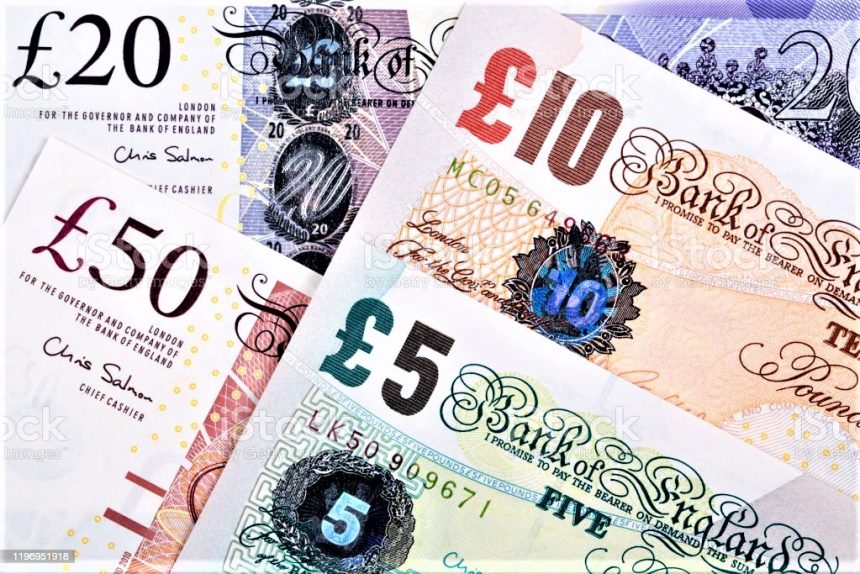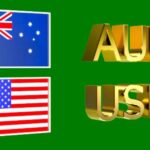Pound Sterling Gains Ground as Trump Targets Fed Independence, Undermining USD Strength.
The British Pound Sterling (GBP) trades firmly against the US Dollar (USD) on Tuesday, remaining resilient above the 1.3400 mark—a level not seen in over three years. This strength in GBP/USD comes amid heightened political drama in the United States, where former President Donald Trump’s escalating attacks on the Federal Reserve and its Chair Jerome Powell have severely dented the Greenback’s safe-haven appeal.
Trump’s aggressive rhetoric has not only fueled political uncertainty but also raised serious concerns about the Fed’s autonomy. As the Dollar weakens under pressure, the Pound capitalizes on market volatility, even as traders remain cautious ahead of pivotal UK economic data and a possible Bank of England (BoE) rate cut in May.
Trump’s War on the Fed: A Crisis of Credibility
At the center of the USD’s recent woes is Donald Trump’s public assault on the Federal Reserve’s independence. In a string of posts on his social media platform, TruthSocial, Trump criticized Fed Chair Jerome Powell for maintaining a restrictive monetary policy stance amid a fragile economic recovery.
“There can be a SLOWING of the economy unless Mr. Too Late, a major loser, lowers interest rates, NOW,” Trump posted, reigniting investor concerns about political interference in the Fed’s policy decisions.
The pressure campaign escalated further when Trump openly suggested firing Powell, stating, “If I want him out of there, he’ll be out real fast, believe me.” Such statements have alarmed financial market participants who view central bank independence as a cornerstone of financial stability.
USD Takes a Hit as Safe-Haven Status Deteriorates
The US Dollar Index (DXY), which tracks the USD against a basket of six major currencies, plunged to a fresh three-year low near 98.00. The Greenback’s fall reflects not only fears of institutional compromise but also the unpredictability of Trump’s broader policy direction.
Trump’s protectionist trade stance—marked by surprise tariff hikes followed by sudden pauses—has added to investor anxiety. The most recent example involves the imposition of 10% reciprocal tariffs and a 25% levy on foreign steel and cars, decisions that were partially reversed within weeks. This erratic policymaking has made traders question the long-term reliability of the US economic outlook.
Pound Sterling Holds Firm Despite BoE Rate Cut Expectations.
While the US Dollar falters, the Pound Sterling remains surprisingly firm—even as expectations mount that the BoE could slash interest rates in May. This resilience suggests that GBP traders are largely pricing in potential policy easing, viewing it as a necessary adjustment amid a cooling economy rather than a signal of weakness.
Recent UK inflation data has fueled these expectations. The March Consumer Price Index (CPI) showed a moderation in services inflation, rising just 4.7% compared to February’s 5.0%. Given that services inflation is closely monitored by the BoE, the slowdown provides a rationale for rate cuts.
Mixed Sentiment Surrounds the GBP Ahead of Key UK Data
Despite its recent strength, the Pound has shown a mixed performance against major peers, reflecting investor uncertainty ahead of upcoming UK economic releases. Traders are closely watching Wednesday’s preliminary S&P Global/CIPS Purchasing Managers’ Index (PMI) for April, and Friday’s UK Retail Sales data for March. These figures could provide clearer direction for the BoE’s policy path.
BoE policymaker Megan Greene, speaking with Bloomberg TV, acknowledged the persistence of service-sector inflation but also flagged external disinflationary pressures. “Tariffs actually represent more of a disinflationary risk than an inflationary risk,” she noted. Greene downplayed the threat of a labor market slowdown despite rising employer social security contributions taking effect this month.
Global Trade Uncertainty Clouds UK Policy Outlook
The UK economy is not immune to the ripple effects of Trump’s erratic trade policies. While some analysts expect a bilateral UK-US trade deal to follow Trump’s return to protectionism, the real threat lies in global trade distortion. Other nations impacted by US tariffs may divert exports to the UK, increasing competition and driving down prices—a dynamic that could further suppress inflation and support the case for BoE easing.
In April, the BoE’s Financial Policy Committee (FPC) warned that significant shifts in “global trading arrangements” could threaten financial stability and depress growth, signaling the central bank’s heightened vigilance.
Technical Analysis: GBPUSD Bulls Eye Higher Ground
From a technical standpoint, GBPUSD is trading comfortably above key resistance levels, suggesting that further upside could be on the cards if USD weakness persists. The next resistance zone lies around 1.3450, followed by the 1.3500 psychological level. Momentum indicators remain supportive, and dips toward the 1.3350-1.3380 zone are likely to be viewed as buying opportunities in the near term.
However, a disappointing UK PMI or retail sales report could trigger a corrective pullback, especially if BoE officials strike a dovish tone ahead of the May policy meeting.
Market Outlook: Sterling Set to Outperform if USD Woes Deepen
The broader outlook for the Pound Sterling remains constructive as long as the USD continues to be bogged down by domestic political tensions and a credibility crisis at the Fed. The Fed’s perceived loss of independence not only undermines its inflation-fighting credibility but also creates uncertainty over the future direction of US interest rates.
Meanwhile, the UK, despite its own economic challenges, seen as navigating a more predictable policy path. Even if the BoE cuts rates, it expected to do so cautiously and transparently, which supports investor confidence in GBP-denominated assets.
As such, the GBPUSD pair is likely to remain supported, with 1.3400 acting as a near-term pivot. Traders should brace for volatility around key data releases but keep an eye on US political developments, which now play a dominant role in USD valuation.
Conclusion
The Pound Sterling’s recent gains against the US Dollar underscore a dramatic shift in currency market dynamics. As Donald Trump intensifies his public attacks on Fed Chair Jerome Powell and threatens to undermine the institution’s independence, the Greenback’s credibility has taken a serious hit. In contrast, the UK Pound has benefited from this chaos, even as domestic factors like soft inflation and global trade disruptions weigh on the outlook.
While a potential BoE rate cut in May could cap further gains, the GBPUSD pair looks set to test higher levels if the Fed’s political drama continues. With the global economic environment increasingly influenced by populist politics and protectionist agendas, safe-haven flows may continue to bypass the USD in favor of more stable alternatives like the Pound.
https://voiceoftraders.com/analysis/eurusd-clings-to-gains-as-trump-strikes-feds-independence









